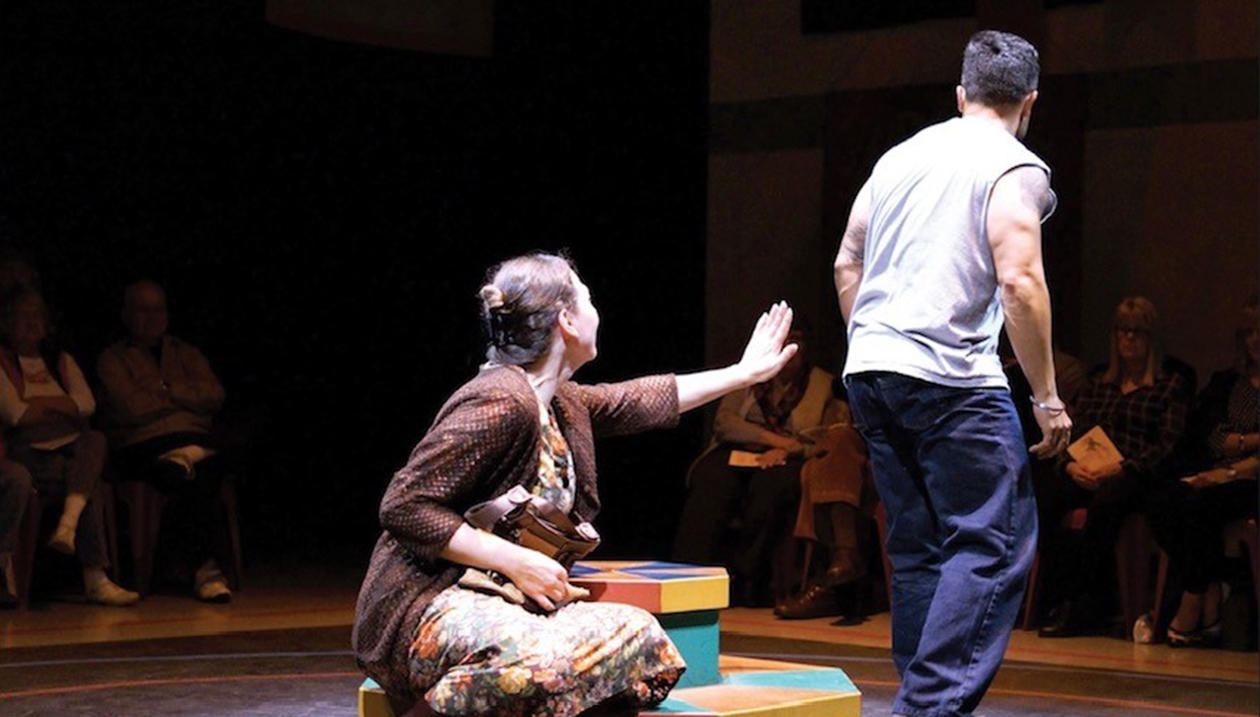William Head on Stage (WHoS), Canada’s only inmate-run theatre company, is preparing for a public performance. Annually, for over 40 years, WHoS has put together a theatre production, inviting the public to witness its captivating performances.
Theatre in prison isn’t new. But viewed through a criminological lens, it offers insight into prison dynamics and the possibilities of rehabilitation. That’s the focus of a recent book published at the University of Ottawa Press, Staging Prison Theatre in Canada, by criminologists Thana Ridha, a graduate of the uOttawa Criminology program and Sylvie Frigon, a professor and vice-dean, graduate studies, at the Faculty of Social Sciences.
Their research, centred on the experiences of WHoS participants, is the first of its kind in Canada. It explores how creativity intersects with confinement, identity, and personal and social change.
Rehabilitation through a different lens
Most existing writing on prison theatre comes from the field of applied theatre, where practitioners often reflect on their personal experiences and observations from working inside institutions. Rather than analyzing performance, Ridha and Frigon’s research focuses on process—collaboration, responsibility, emotional expression—all within the confines of the prison.
What emerges when people in prison build something creative together and how does that reshape the meaning of “rehabilitation”? Ridha and Frigon explore this question through a criminological lens, focusing on prison structures, the emotional impact of incarceration and the perspectives of those directly involved.
“We integrate a unique (criminological) conceptual framework in our analyses of the participants’ experiences with WHoS that captures the prison backdrop, taking into account both the structural and social system of prison,” says Ridha.

“We integrate a unique (criminological) conceptual framework in our analyses of the participants’ experiences with WHoS that captures the prison backdrop”
Thana Ridha
— Criminologists and graduate of the uOttawa Criminology program
One of the core insights from the research is that WHoS provides an alternative space—both socially and emotionally—within the prison. Participants described it as one of the few places where they could build their confidence, safely express emotion, take initiative and connect meaningfully with others.
Reshaping inmates’ experience and identity
Participation in WHoS is voluntary, creative and collaborative—unlike traditional correctional interventions, which are often structured and designed to target specific risk factors. Instead, WHoS supports and helps promote what criminology calls “protective factors”: co-operation, communication and social connection. These are all elements that can contribute to “desistance,” the process of moving away from crime and toward a prosocial life.
Ridha and Frigon’s research highlights how, through roles in acting, set design, costumes and administration, participants developed not just skills, but also a sense of agency. The collaborative nature of the inmate-run theatre company altered social dynamics inside the prison, creating a space that valued trust and shared responsibility—qualities not typically associated with institutional environments. “We were struck by how the theatre space transformed social dynamics and fostered real community among the men,” says Frigon.
The presence of outside audiences at WHoS also played a role. Public performances created moments of interaction between incarcerated individuals and members of the broader community. These interactions helped challenge stereotypes and offered participants a rare sense of visibility and recognition from outside the prison system.
What comes next
Ridha and Frigon’s study is meant be a starting point, not a conclusion. The two plan to return this year to William Head Institution during the theatre season to present their book to the participants whose voices shaped the research.
The researchers hope their work encourages broader discussion on the significance of art-based initiatives in prison and their role in rehabilitation, through a shared process, a form of presence, and a way of imagining something different, both individually and collectively.


